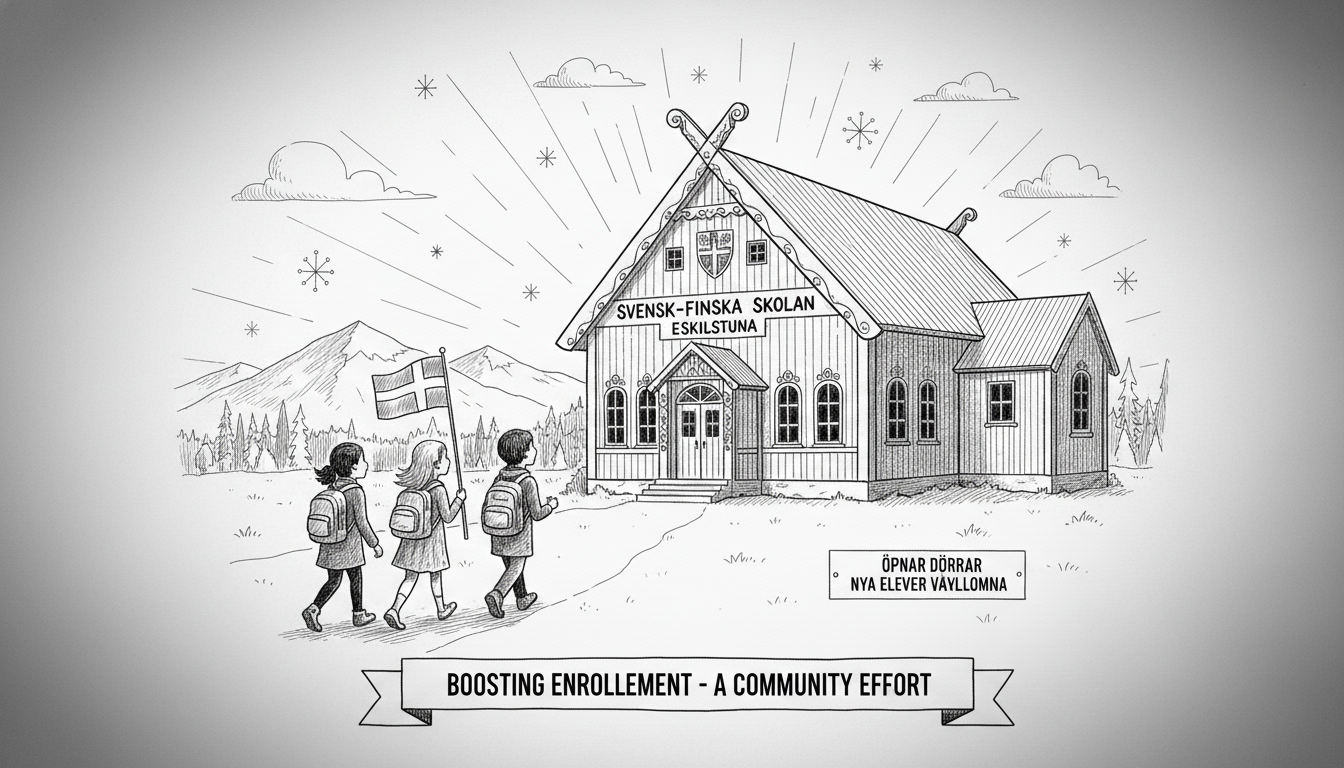A unique bilingual school in central Sweden faces declining student numbers. The Swedish-Finnish School in Eskilstuna has seen its enrollment drop sharply in recent years. The institution previously educated over one hundred students. Now it serves just over sixty children.
School administrators work actively to reverse this trend. They want to return to their former enrollment levels. "Our big goal and our dream is to have one hundred students again," said Milka Paavonperä from the ERK Foundation. The foundation operates this independent Swedish-Finnish school.
The current situation requires combined classes in lower grades. Fifth and sixth grades maintain separate classes. Each has roughly ten students. This arrangement allows the school to continue offering comprehensive bilingual education despite smaller numbers.
Bilingual education remains relatively rare in Sweden's school system. These institutions serve important cultural preservation functions. They help maintain Finnish language and traditions within Swedish society. About 7% of Sweden's population has Finnish roots or connections.
Recent classroom visits showed third and fourth graders learning mathematics together. Ten-year-old Emmi and twelve-year-old Nova shared their experiences. They explained daily life in a bilingual educational environment. Both students navigate Swedish and Finnish instruction throughout their school day.
Why does enrollment matter for specialized schools like this one? Smaller classes can mean limited resources and programming. Schools might struggle to offer diverse extracurricular activities. They could face challenges maintaining specialized teaching staff. Yet smaller classes also allow more individual attention for each student.
The Swedish education system includes both municipal schools and independent schools. Independent schools receive public funding based on student numbers. Declining enrollment directly impacts operational budgets. This creates financial pressure that can affect educational quality.
What does the future hold for bilingual education in Sweden? Demographic shifts and changing immigration patterns play roles. Parental choice and educational priorities also influence enrollment. Schools must demonstrate their unique value to attract families.
The Eskilstuna school's situation reflects broader trends in specialized education. Niche institutions nationwide face similar challenges. They must balance cultural preservation with practical realities of school administration. Their success or failure affects cultural diversity within Swedish education.
School officials express determination to rebuild their student body. They believe in their educational model's value. The coming academic year will prove crucial for their recruitment efforts. Their experience could inform similar institutions across the Nordic region.

